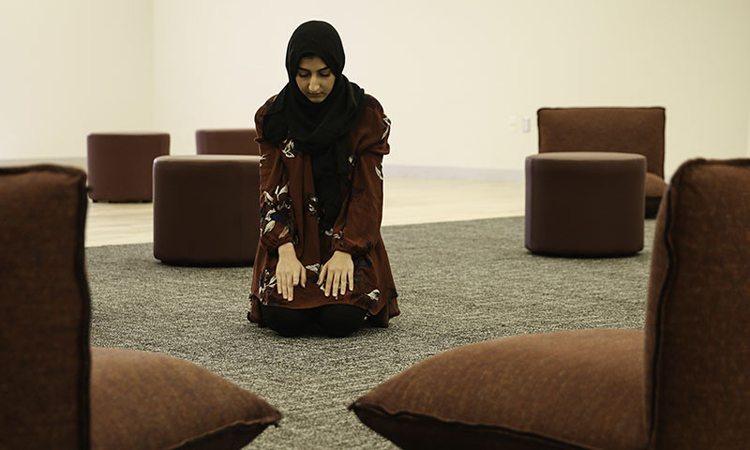In an era where smartphones are as common as prayer books, technology is reshaping the landscape of spiritual journeys. Today’s pilgrims are as likely to consult a GPS as they are a sacred text, blending ancient traditions with modern innovations.
From virtual tours of the Vatican to live-streamed services at Mecca’s Grand Mosque, digital tools are expanding access to holy sites and rituals. This transformation isn’t just about convenience. It’s revolutionizing how millions connect with their faith.
In this piece, we will explore the intersection of technology and spirituality. We’ll uncover how these digital advancements are creating new pathways for devotion.

Virtual Tours of Sacred Sites
Virtual tours of sacred sites have revolutionized access to holy places, with Google Arts & Culture playing a pivotal role in this digital transformation. The platform has expanded its offerings, now featuring high-resolution imagery and 360-degree views of numerous religious landmarks worldwide.
The Vatican’s virtual tour, available through the official Vatican Museums website, exemplifies this trend. Launched in response to pandemic-related closures, it has continued to evolve, offering detailed explorations of the Sistine Chapel and Raphael’s Rooms.
Despite the popularity of these virtual offerings, they have not diminished the appeal of in-person visits. In fact, Statista states that the Vatican Museums experienced a significant resurgence in physical attendance. They welcome approximately 6.8 million visitors in 2023 – a remarkable 33% increase from the previous year.
This surge suggests that virtual tours may be complementing rather than replacing traditional pilgrimages. Also, people might want to visit these sacred sites in person after experiencing them digitally.
Digital Prayer Walls and Online Rituals
In the age of digital connectivity, sacred rituals, and holy sites are no longer confined to their physical locations. Traditional practices are being reimagined and extended into the virtual realm.
One of the most notable examples of this digital evolution can be found in Jerusalem. At the heart of Jerusalem’s Old City, the Western Wall stands as a testament to faith and history. The Western Wall, an ancient limestone wall in Jerusalem’s Old City, stands as one of Judaism’s holiest sites.
However, can pilgrims extend their services and faith from thousands of miles away? The answer is a resounding yes.
It now extends its spiritual reach far beyond its physical presence in Israel. The Western Wall Heritage Foundation has embraced this digital transition, offering an online note service that connects devotees worldwide to this sacred site. These digital supplications are then printed and placed within the Wall’s crevices, maintaining the ancient tradition of leaving written prayers at the site.
However, if you are enticed by these cutting-edge digital services, you might want to feel the bliss in person. You can search “Where is the Wailing Wall in Jerusalem” to book nearby accommodations and travel plans.
To delve deeper into the Wall’s history and antiquities, Isrotel suggests you explore the fascinating network of tunnels dug along its subterranean sections. These Tunnel Tours offer a unique perspective, allowing you to walk through the tunnels and see the Western Wall from a different vantage point.
For an unforgettable experience, visit thekotel.org (Tunnel Tours Jerusalem Western Wall) to book your tickets. Admission fees are approximately $10 for adults and $7 for children, students, security personnel, and the elderly.
Live-Streaming of Religious Services
The COVID-19 pandemic accelerated the adoption of live-streaming for religious services, a trend that has persisted even as physical gatherings resume. This digital shift has allowed faith communities to maintain connections and reach broader audiences.
Mecca’s Grand Mosque exemplifies this global trend, offering live streams of daily prayers and special events. These broadcasts allow Muslims worldwide to participate in prayers and ceremonies, even when they are unable to be physically present.
The impact of this digital transformation extends beyond individual faiths. According to a November 2022 Pew Research Center survey, over 25% of American adults regularly watch religious services on TV or online.
This significant adoption of digital religious experiences coexists with traditional attendance. The same survey found that about a third of U.S. adults regularly attend services in person.
However, this digital shift presents technological challenges. Issues like bandwidth limitations and audio quality have been addressed through investments in streaming infrastructure. Religious institutions have had to adapt quickly, learning to balance the needs of in-person attendees with those of their online audience.
FAQs
Q: Are there any privacy concerns associated with online prayer walls?
A: While the level of privacy varies by platform, it’s crucial to research a prayer wall’s data security practices before submitting personal information. Look for platforms that anonymize submissions or offer options to control who can view your prayers.
Q: Can virtual tours replace the experience of a physical pilgrimage?
A: Virtual tours offer a valuable introduction to sacred sites and can enrich the pilgrimage experience. However, the sensory and spiritual aspects of a physical pilgrimage, like the atmosphere and interactions with fellow pilgrims, remain irreplaceable. Virtual tours can be a great way to prepare for a physical pilgrimage. They can help you continue your spiritual journey when a physical visit isn’t possible.
Q: How can I ensure a respectful online religious experience?
A: Be mindful of the etiquette specific to the faith tradition. Treat virtual spaces with the same reverence as physical, religious settings. Avoid disruptive behavior or disrespectful language during online services or discussions. Additionally, be respectful of others’ beliefs and perspectives, even if they differ from your own.
The digital transformation of pilgrimages extends far beyond convenience. It fosters inclusivity, broadens access to spiritual practices, and creates novel pathways for devotion. Technology cannot replicate the profound experience of a physical pilgrimage. However, it serves as a powerful tool for deepening our connection to the divine and enriching our spiritual journeys.



